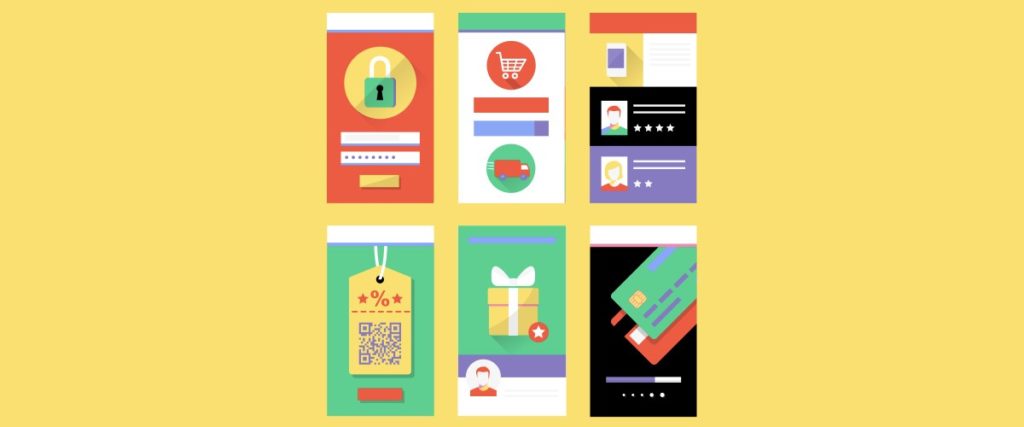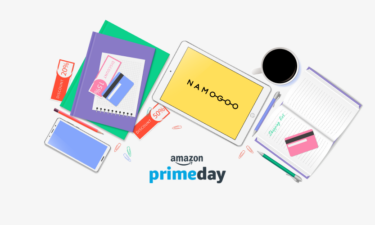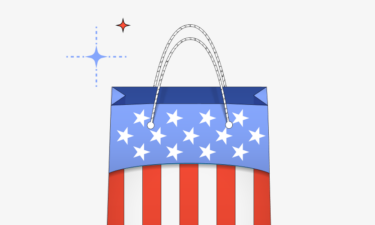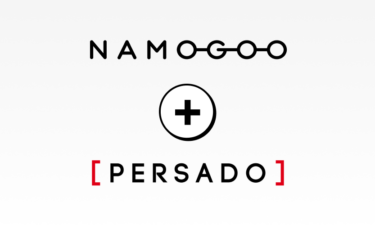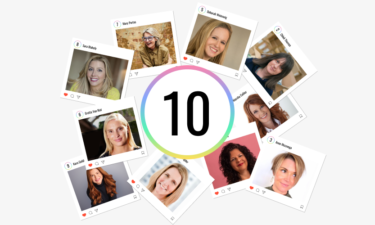Bonus material: 5 Types of Customers & What Motivates Them Guide
by Namogoo & Microsoft
Personalized marketing is quickly becoming a cornerstone of online marketing, with brands like Old Navy, Amazon, and Hulu leveraging AI and machine learning to deliver carefully curated recommendation lists based on user’s demographics, location, and past behavior.
But, there’s also another market taking on personalization.
D2C brands like Dollar Shave Club and Casper are getting rid of stores and distributors to deliver their products directly to users, often at much lower prices.
One of the reasons they are so successful? Personalization.
As consumers spend more time online, they’re sharing more information than ever with businesses. That makes personalization more accessible and accurate.
Let’s take a look at five D2C brands leveraging buyer intent data to deliver personalized marketing at scale.
#1 eCommerce Personalization Example: Warby Parker
#2. Casper
#3. ASOS
#4. Butcher Box
#5. WAG
#6. IPSY
#7. Dollar Shave Club
Personalization Offers Powerful Results for eCommerce Brands
#1 eCommerce Personalization Example: Warby Parker
Warby Parker is on a mission to disrupt the eyeglass industry by taking it online.
The company overcame one of the biggest pain points of buying glasses online (namely, that you can’t try them on over the internet) by allowing users to order and try on five different eyeglass frames at no cost.
But where they really shine is in personalization — and it starts right on their homepage.
They offer three ways to personalize your Warby Parker experience on the home page — by location, gender, or with a personalized quiz.
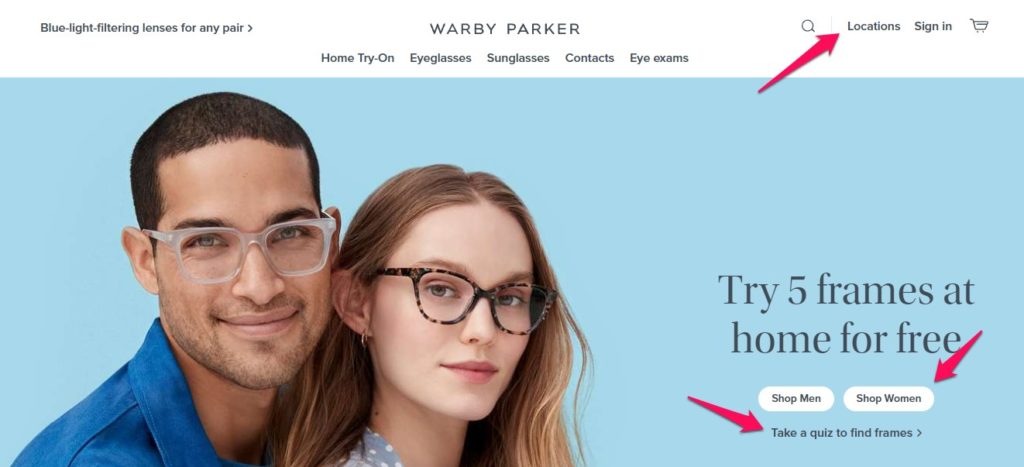
This allows consumers to share as much or as little information as they like, while providing Warby Parker with the information they need to offer a personalized shopping experience.
Here’s a peek at their quiz:
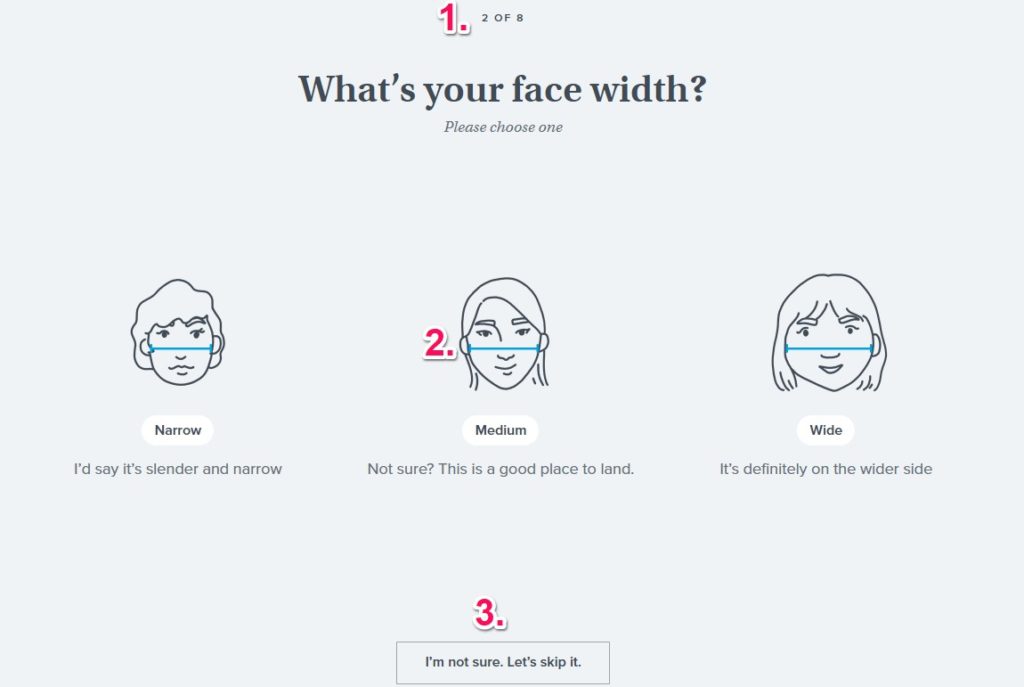
Three main things stand out about their glasses quiz:
- They show how many questions are left in the quiz, which lets you know how long it is. This encourages users to finish.
- They offer an “in the middle option,” which I love because I honestly don’t know if my face is narrow or wide.
- They allow users to skip the question entirely if they aren’t sure.
Offering a way out keeps users that aren’t sure how to answer on the path to completion.
Next, they ask which shapes, colors, and materials users prefer. The last question asks for an email address to get access to the quiz later but also allows users to opt-out of marketing messages.
This helps gather information but isn’t too pushy.

Most people are fine with offering information in exchange for personalized offers (in fact, 83 percent * consumers are happy to share their data in exchange for a personalized experience), but they also provide a way out for consumers who aren’t comfortable sharing their data.
In addition to using data to personalize offers, Warby Parker also uses AI to recommend frames and create a personalized lead nurturing campaign.
Warby Parker’s approach to personalization seems to be working well; the brand has grown to $250 million* in sales in recent years.
#2. Casper
Casper is an online mattress and bedding company taking over a traditionally sleepy industry. As online shopping increases, they decided mattresses could be sold online, too. They were right.
The problem is not everyone wants the same type of mattress. Some people prefer soft; others firm. Back problems, hot flashes, and allergies can all impact which mattress will be the right fit for a specific consumer.
Casper solved these issues with a quiz that asks questions about sleep patterns and preferences to deliver a personalized recommendation.

Users choose the type and size of mattress they want, as well as three issues that keep them from getting a good night’s sleep. This information helps Casper build a custom profile of each user.
What is most interesting is they offer just one mattress recommendation, not several. This helps with option overload, which can paralyze users from making a decision.
Instead, Casper builds a custom landing page that details exactly why a mattress is the best fit based on pain points the user provides.
For example, they recommended the Element for side sleepers who toss and turn at night and want to feel cool.

The one drawback is their recommendation is out of stock; it would be nice to know when it will be back in stock or what similar options are available.
#3. ASOS
ASOS is a British fashion and cosmetic industry offering more than 850 brands of clothing and accessories worldwide. They take personalization to the next level by gathering data about the user’s height, weight, body shape, recent purchases, and more to offer detailed product recommendations.
They aren’t relying on third-party cookies for this data, either (remember, those are going away soon.) Instead, they ask users to sign in. However, they don’t push signing in — you can still view clothing and use their impressive filters to find the right clothes without creating an account.
When creating an account, you can log in Google, Apple, Facebook, or email.

Using Google, Apple, and Facebook likely gives ASOS access to more data about users’ search and purchase history.
If you choose email (like I did) they’ll ask for your birthdate and preferences. They even count down to your birthday, which makes me think they’ll offer a personalized gift or discount of that day.

ASOS uses that data to offer personalized recommendations at the bottom of each product page, which gets more accurate as it gathers more data. By asking users to sign in, they can also follow users across devices.
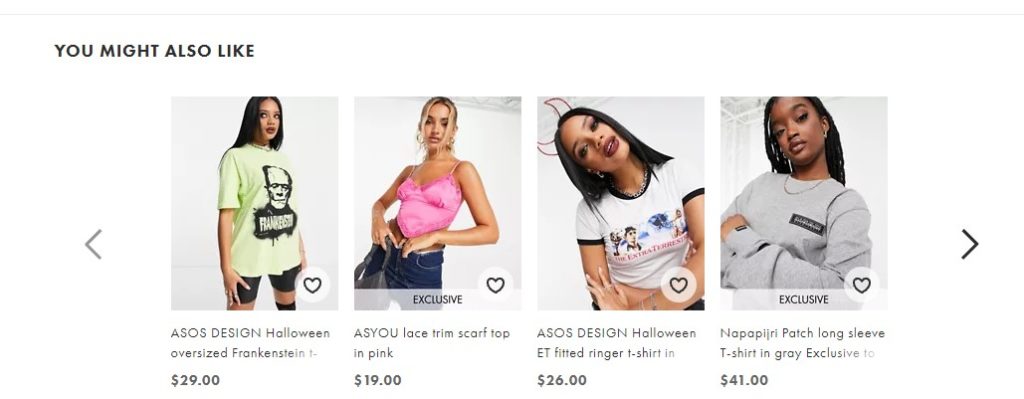
ASOS offers a ton of filters to help users hone in on just what they are looking for based on fit, category, product, price, and more.

ASOS faces sell in over 100 countries — and not all countries use the same sizing or measuring system.
They get around this pain point by offering a “Fit Assistant” that recommends sizes based on height (in inches or centimeters) and weight (in pounds or kilos.)

Offering measurements and currencies that users recognize is a simple way to make users feel more comfortable completing their purchase.
#4. Butcher Box
Butcher Box is a direct-to-consumer company delivering high-quality, sustainable meat, including grass-fed beef, free-range chicken, and wild-caught seafood.
They’ve reached unicorn status by partnering with influencers, working with well-defined customer personas, and leveraging personalization.
Unlike fashion brands that can offer hundreds of product recommendations, Butcher Box works with a smaller product line. However, they know what people eat is personal, so they allow users to choose from a curated box of meats or build their own:

Every step of the way is personalized, from the size of the box and how often it’s delivered to the cuts of meat.

Users can stick with the same cuts of meat every month, or switch it up

In addition to allowing users to personalize every aspect of their box, they also allow users to cancel or skip boxes whenever they want.
#5. WAG
WAG is a high-growth Australian premium pet food brand. Partially due to the pandemic, the brand has achieved massive eCommerce growth in the past couple of years.
By leveraging customer purchase intention to tailor the onsite experience to each individual shopper WAG was able to:
- Increase revenue by 30%
- Reduce ad spend by 20%
- Increase average order value by 10%…
All within 2 weeks of kicking off their Intent-Based Promotions campaign.
Intent-Based Promotions helps to serve a personalized experience to each individual visitor based on their intent. It works by calculating shoppers’ purchasing patterns and intent to determine the right offer for each specific customer during their session, based on behavioral and intent signals:

This enables a personalized customer onsite experience that leads to successes like WAG was able to realize.
Presenting promotions only to those who require one to convert not only drives conversion rates and revenue but also protects your margins by reducing the average discount rate.
For example, I might see this offer for 7% off when browsing WAG’s site:
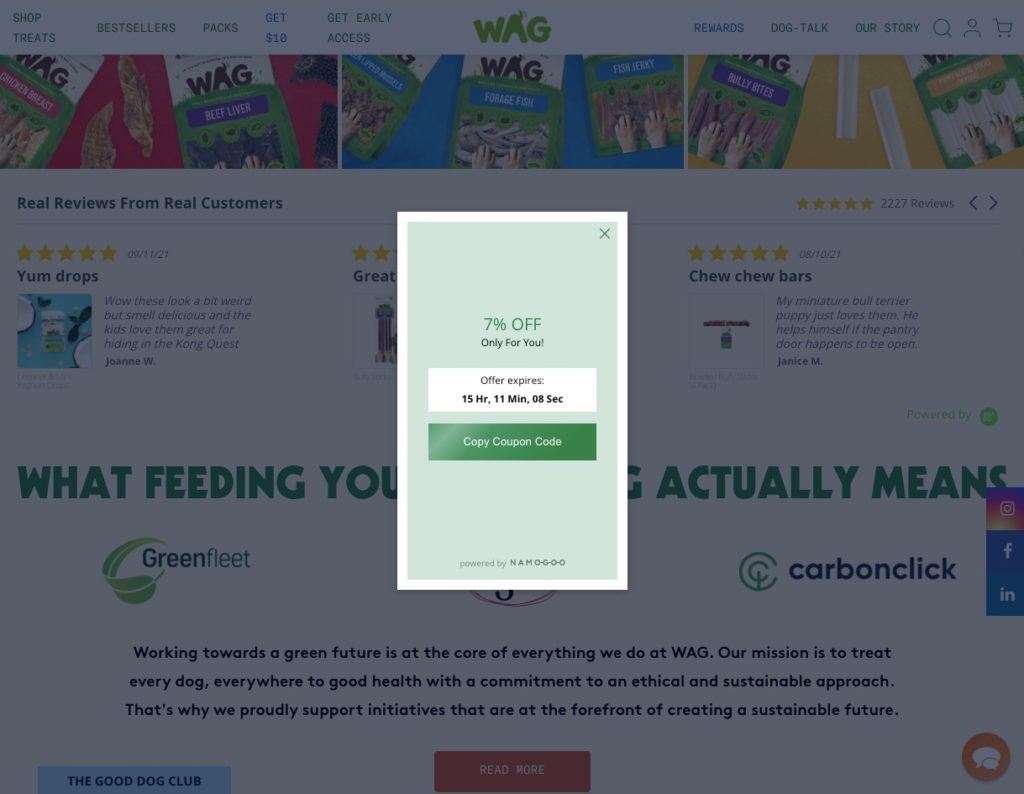
But another visitor who is just window shopping may see no discount at all.
Ensuring your customers are offered the minimum promotion required to convert personalizes the experience for the customer while also protecting your margins and brand equity.
#6. IPSY
IPSY is a beauty subscription box that provides members with sample and trial sizes of personal care and cosmetic products, and personalization is a cornerstone of their success.
IPSY’s subscription product is called the Glam Bag, and they start the personalization process from the minute you land on their site.
Like many of the examples in this article, the brand collects customer data through a “quiz”:
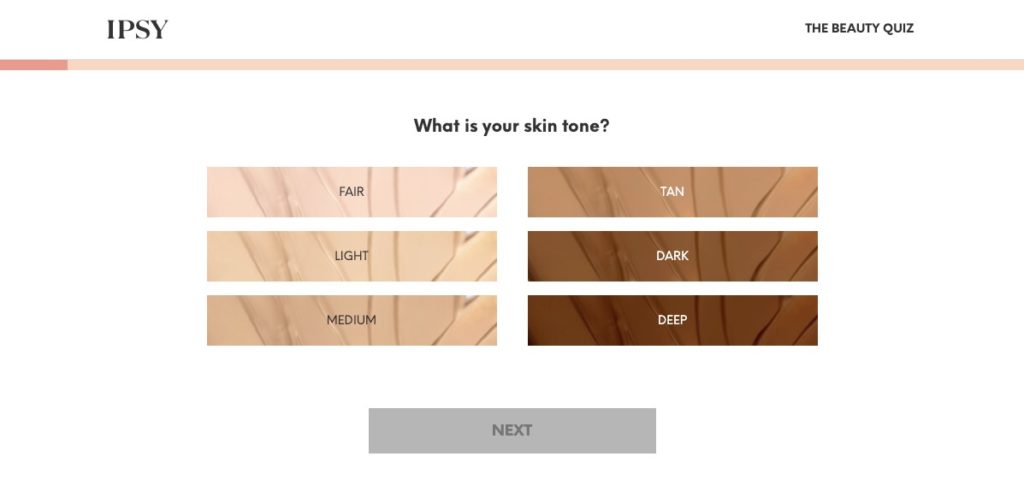
This helps IPSY to customize the products they select for your monthly Glam Bag so customers don’t end up with a foundation that doesn’t match their skin tone or a fragrance they hate.
They don’t stop when they ship your product, though. Each month, customers receive email prompts to review each item they received in their bag. This allows the company to further personalize and refine the products they include in each shipment.

Of course, this isn’t just a retention play. IPSY uses that data to increase their customer lifetime value by promoting the full-sized versions of favorited products, and cross- and up-selling customers based on the products they loved.

This undoubtedly increases IPSY’s average order value, while also better retaining customers.
#7. Dollar Shave Club
The shaving industry used to be dominated by big brands like Gillette that charged top dollar for razors and shaving heads.
That was until Dollar Shave Club showed up. Originally offering affordable razors, the brand now offers everything you need for the bathroom including shaving cream, deodorant, and hair pomade — all automatically delivered directly to consumers once a month.
The core of Dollar Shave Club’s success, however, isn’t just low prices and automation; it’s the highly personalized experience they create through their “Tell us how you get ready.” quiz.

The quiz uses information about frequency, shaving problems (like ingrown hairs or razor burn), skin issues, soap vs body wash, and deodorant preferences to build a custom box.
Users can edit the box to add additional products (thereby increasing DSC’s average order value) and update delivery frequency.

The quiz makes it easy for users to find exactly the items they need, and the ability to swap items means users can build a 100% custom box.
Personalization Offers Powerful Results for eCommerce Brands
Personalization is crucial to driving online sales. It’s particularly important for D2C brands that aim to cut out the middleman and connect directly with customers. The good news is, you don’t need a million-dollar budget to build customized, personalized marketing strategies.
Intent-based promotions empower brands of all sizes to connect with customers and deliver relevant, timely recommendations based on user behavior.
Want to learn more? Find out how intent data can drive your business forward.



